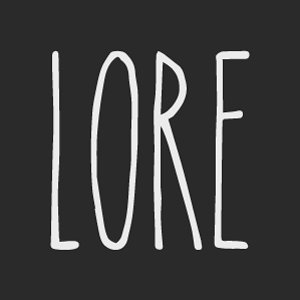“Prehistoric Puppy May Be Earliest Evidence of Pet-Human Bonding,” National Geographic, Feb. 2018, https://www.nationalgeographic.com/history/article/ancient-pet-puppy-oberkassel-stone-age-dog
“Are They Real Mascots?” The Chicago Tribune. June 20, 1886. https://www.newspapers.com/image/349712400/
Atsma, Aaron J. “Lyssa.” Theoi Project. Accessed June 6, 2022. https://www.theoi.com/Daimon/Lyssa.html
Auble, Cassandra. “The Cultural Significance of Precious Stones in Early Modern England.” Doctoral dissertation, University of Nebraska – Lincoln, 2011. https://digitalcommons.unl.edu/cgi/viewcontent.cgi?article=1039&context=historydiss
Baer, George M. The Natural History of Rabies (CRC Press, 2017). https://www.google.com/books/edition/The_Natural_History_of_Rabies/CFIPEAAAQBAJ
Banyard, A.C., et. al. “Introduction: History of rabies control by vaccination.” Revue scientifique et technique Office international des épizooties 37(2), August 2018. https://www.researchgate.net/publication/330757546_Introduction_History_of_rabies_control_by_vaccination_-EN-_Introduction_History_of_rabies_control_by_vaccination_-FR-_Introduction_Histoire_de_la_lutte_contre_la_rage_au_moyen_de_la_vaccination_-ES-_I
Barrett, Alan D.T., and Lawrence R. Stanberry. Vaccines for Biodefense and Emerging and Neglected Diseases (Academic Press, 2009). https://books.google.com/books?id=6Nu058ZNa1MC
Bunch, Ashley. “Stubby's story: All about the iconic World War I 'war dog' ... and star of an upcoming animated film.” Military Times. June 7, 2017. https://www.militarytimes.com/2017/06/07/stubby-s-story-all-about-the-iconic-world-war-i-war-dog-and-star-of-an-upcoming-animated-film/
Crawley, Melissa. Beware of Dog: How Media Portrays the Aggressive Canine (McFarland Incorporated, 2021). https://www.google.com/books/edition/Beware_of_Dog/gZcuEAAAQBAJ
“Destroying the dogs.” The New York Times. July 6, 1877. https://timesmachine.nytimes.com/timesmachine/1877/07/06/80651741.html?pageNumber=8
Dickey, Bronwen. Pit bull: The battle over an American icon (Alfred A. Knopf, 2016). https://archive.org/details/pitbullbattleove0000dick/
Dillard, Tom. “Driven 'mad' by fear, Arkansans turned to folk cure for rabies.” Northwest Arkansas Democrat Gazette. April 4, 2021. https://www.nwaonline.com/news/2021/apr/04/tom-dillard-driven-mad-by-fear-arkansans-turned/
DiMarco, Vincent. The Bearer of Crazed and Venomous Fangs: Popular Myths and Learned Delusions Regarding the Bite of the Mad Dog (iUniverse, 2014). https://books.google.com/books?id=Au51AwAAQBAJ
“The Dog Law.” The New York Times. June 25, 1877. https://timesmachine.nytimes.com/timesmachine/1877/06/25/80650316.html?pageNumber=4
Dufour, , Héloïse, and Sean Carroll. “Great myths die hard.” Nature 502, October 3, 2013. https://www.nature.com/news/polopoly_fs/1.13839!/menu/main/topColumns/topLeftColumn/pdf/502032a.pdf
Dulles, Charles W. “The Treatment of Hydrophobia, Historically and Practically Considered.” The Journal of the American Medical Association. August 16, 1884. https://jamanetwork.com/journals/jama/article-abstract/422949
Fleming, George. Rabies and hydrophobia: Their history, nature, causes, symptoms, and prevention (Chapman and Hall, 1872). https://archive.org/details/rabieshydrophobi00flem/
Forbes, Thomas R. “The Madstone.” In American Folk Medicine: A Symposium (UCLA Conference on American Folk Medicine, 1973). https://archive.org/details/americanfolkmedi0000ucla/
Geiling, Natasha. “The (Still) Mysterious Death of Edgar Allan Poe.” Smithsonian Magazine. October 7, 2014. https://www.smithsonianmag.com/history/still-mysterious-death-edgar-allan-poe-180952936/
Hansen, Bert. “America's First Medical Breakthrough: How Popular Excitement about a French Rabies Cure in 1885 Raised New Expectations for Medical Progress.” The American Historical Review 103(2), April 1998. https://www.jstor.org/stable/2649773
“History.” Pasteur Foundation. Accessed June 6, 2022. https://pasteurfoundation.org/about/history/
“Historical Perspectives A Centennial Celebration: Pasteur and the Modern Era of Immunization.” Morbidity and Mortality Weekly Report 34(26), July 5, 1985. https://www.cdc.gov/mmwr/preview/mmwrhtml/00000572.htm
“The Irrepressible Spitz.” The New York Times. April 19, 1878. https://timesmachine.nytimes.com/timesmachine/1878/04/19/80681005.html?pageNumber=5
Jackson, Alan C., and William H. Wunner. Rabies: Scientific Basis of the Disease and Its Management (Academic Press, 2010). https://books.google.com/books?id=C-U1LFK5zagC
Johnston, Gemma. “The Spectacular Spitz Breeds.” American Kennel Club. June 14, 2021. https://www.akc.org/expert-advice/dog-breeds/spitz-dog-breeds/
“Joseph Gillespie to William H. Herndon.” Northern Illinois University Digital Library. January 31, 1866. https://digital.lib.niu.edu/islandora/object/niu-lincoln%3A35790
Kane, Gillian. “Sergeant Stubby.” Slate. May 7, 2014. https://slate.com/news-and-politics/2014/05/dogs-of-war-sergeant-stubby-the-u-s-armys-original-and-still-most-highly-decorated-canine-soldier.html
King, Arthur A. (ed). Historical Perspective of Rabies in Europe and the Mediterranean Basin (World Organisation for Animal Health, 2004). https://foxrabiesblueprint.org/IMG/pdf/pdf_106_king_et_al_2004.pdf
“Local News.” Terre Haute Saturday Evening Mail. March 26, 1892. https://newspapers.library.in.gov/cgi-bin/indiana?a=d&d=SEM18920326.1.5&srpos=16&e=-------en-20--1--txt-txIN-madstone------
“Lyssa.” GreekMythology.com. Accessed June 6, 2022. https://www.greekmythology.com/Other_Gods/Primordial/Lyssa/lyssa.html
Markel, Howard. “Louis Pasteur’s risky move to save a boy from almost certain death.” PBS NewsHour. July 7, 2016. https://www.pbs.org/newshour/health/louis-pasteurs-risky-move-to-save-a-boy-from-almost-certain-death
Marshall, Michael. “Humans may have domesticated dogs by accident by sharing excess meat.” New Scientist. January 7, 2021. https://www.newscientist.com/article/2264329-humans-may-have-domesticated-dogs-by-accident-by-sharing-excess-meat/#ixzz7VTgaZVj3
McGivney, Annette. “Survive a snakebite.” Backpacker. February 27, 2008. https://www.backpacker.com/survival/snake-bite-first-aid/
McGuire, Brian Patrick. Jean Gerson and the Last Medieval Reformation (Pennsylvania State University Press, 2005). https://www.google.com/books/edition/Jean_Gerson_and_the_Last_Medieval_Reform/K6b_oUqk7I0C?hl=en&gbpv=0
Newman, Tim. “What you need to know about rabies.” Medical News Today. November 29, 2021. https://www.medicalnewstoday.com/articles/rabies
Pymm, Rachel. “Snakestones in early modern medicine and society.” Pharmaceutical Historian 50(4), 2020. https://www.ingentaconnect.com/content/bshp/ph/2020/00000050/00000004/art00007?crawler=true&mimetype=application/pdf
Rappouli, Rino. “1885, the first rabies vaccination in humans.” Proceedings of the National Academy of Sciences 111(34), August 26, 2014. https://www.pnas.org/doi/10.1073/pnas.1414226111
“Responding to Rabies.” Smithsonian Institution. Accessed June 6, 2022. https://www.si.edu/spotlight/antibody-initiative/rabies
Rothman, Lily. “This Is What Happened to the First Person to Get the Rabies Vaccine.” Time. July 6, 2015. https://time.com/3925192/rabies-vaccine-history/
Ruth, Kent. “First-Hand Accounts Abound Healing Powers of Madstone Have Long History.” The Oklahoman. June 3, 1984. https://www.oklahoman.com/story/news/1984/06/03/first-hand-accounts-abound-healing-powers-of-madstone-have-long-history/62801384007/
“St Hubert Key.” Pitt Rivers Virtual Collections. Accessed June 6, 2022. http://web.prm.ox.ac.uk/amulets/index.php/keys-amulet3/index.html
“St Hubert’s Key.” The Science Museum Group. Accessed June 6, 2022. https://collection.sciencemuseumgroup.org.uk/objects/co107664/st-huberts-key-nail
“Stubby.” American Museum of National History. Accessed June 6, 2022. https://americanhistory.si.edu/collections/search/object/nmah_439710
“Stubby of A.E.F. Enters Valhalla.” The New York Times. April 4, 1926. https://timesmachine.nytimes.com/timesmachine/1926/04/04/104205074.html?pageNumber=194
Tarantola, Arnaud. “Four Thousand Years of Concepts Relating to Rabies in Animals and Humans, Its Prevention and Its Cure.” Tropical Medicine and Infectious Disease 2(2), June 2017. https://www.ncbi.nlm.nih.gov/pmc/articles/PMC6082082/
Taylor, Stephen J. “The Terre Haute Madstone.” Hoosier State Chronicles. March 24, 2015. https://blog.newspapers.library.in.gov/the-terre-haute-madstone/
Teigen, Philip M. “Legislating Fear and the Public Health in Gilded Age Massachusetts.” Journal of the History of Medicine and Allied Sciences 62(2), April 2007. https://www.jstor.org/stable/24632331
“Try a Mad Stone.” Old Famers Almanac. January 18, 2022. https://www.almanac.com/content/try-madstone
“A Venomous Beast.” The New York Times, November 17, 1876.
Wang, Jessica. Mad Dogs and Other New Yorkers: Rabies, Medicine, and Society in an American Metropolis, 1840–1920 (Johns Hopkins University Press, 2019). https://www.google.com/books/edition/Mad_Dogs_and_Other_New_Yorkers/irexDwAAQBAJ
Wasik, Bill, and Monica Murphy. Rabid: A Cultural History of the World's Most Diabolical Virus (Penguin, 2012). https://books.google.com/books?id=i8j30cXPKj8C
“What Are Madstones?” The Burlington Independent. August 2, 1889. https://www.newspapers.com/image/365179198/
“Where Magic and Medicine Meet.” Antidote. November 1, 2021. https://www.antidote.info/en/blog/reports/where-myth-and-magic-meet
“A Whited Canine Sepulchre.” The New York Times. May 24, 1876. https://timesmachine.nytimes.com/timesmachine/1876/05/24/81691713.html?pageNumber=4
“Who was St. Hubert?” The St. Hubert Club of Great Britain. Accessed June 6, 2022. https://www.sainthubertclub.org.uk/who-was-st-hubert/
Yuhong, Wu. “Rabies and Rabid Dogs in Sumerian and Akkadian Literature.” Journal of the American Oriental Society 121(1), January-March 2001. https://www.jstor.org/stable/606727
